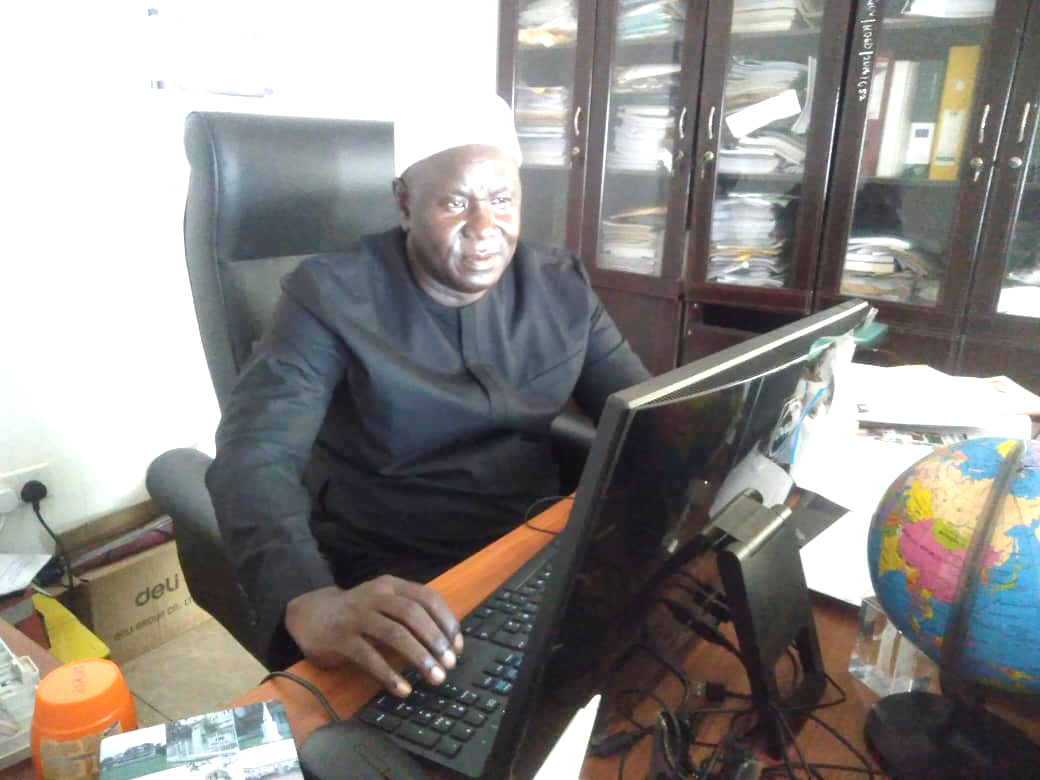By: Mariama Njie
Yusupha Gaye has lived all his life as a fisherman in Sanyang village, his ancestral community where he was born 22 years ago. His daily business involves fishing with his boat. At the sea, he spends 12 hours or more daily and after a typical fishing day, he and other colleagues sell their proceeds to women fish vendors. The day restarts again the next day.
In recent time, however, he has been worrying this fishing business might not outlive his generation due to the threat posed by rising sea level likely to affect his community.
“Sanyang Community is one of the best communities in The Gambia, and as a young fisherman I wouldn’t want to settle elsewhere but here,” he said. “Therefore, if there, supposed to be sea level rise that will wipe out communities then the government should double up,” he added.
At a workshop earlier in 2021, Vice President of The Gambia, Dr. Isatou Touray, mentioned some of the interventions of the government.
“The Government has made very important advances in the climate and disaster risk management agenda. For example, The Gambia has developed a National Policy on Disaster Management, a Strategic Framework, a Multi-Hazard Contingency Plan, and the National Disaster Risk Reduction Plan (2019-2030) under the leadership of NDMA. This Plan specifically recognized the need to integrate climate change adaptation with disaster risk management and is committed to assessing risk as an initial step to develop innovative and sustainable strategies for disaster management and financing,” she said.
Perhaps, these strategies have not kick-started in some communities as many continue to fear a wipe out. The coastal and river zones of the Gambia provide important natural resources for income and food security and contribute significantly to the country’s development through tourism, the provision of employment and transportation.

“The Gambia’s Vision 2020 and more recently the Climate Change Priority Action Plan (CCPAP) have identified 24 cross-sectorial activities that contribute to mainstreaming of climate change into the national development process. The CCPAP will also lead to the development of a Low Emissions Carbon Development Strategy that will allow Gambia to continue to follow a green economic development pathway,” Vice President added.
The Gambia is primarily low-lying and a meter rise in sea level could potentially inundate over 8 percent of the country’s land area. This includes over 61 percent of current mangroves, 33 percent of swamps, and over 20 percent of current lowland rice growing area.
The effects of sea level rise are already being felt, and the forecasts are not very hopeful. First, water is increasingly invading coastal areas, causing soil erosion and threatening farmland, housing or recreation areas. The flooding of wetlands and pollution of aquifers also occur, affecting the flora and fauna of each place, causing the loss of habitat for fish, birds, plants and many other species.
On the social aspect, the constant threat of sea level rise threatens thousands of people living in coastal communities. If water continues to rise, they will be forced to abandon their homes and move to another area, with the corresponding demographic problem.
No hope for businesses in coastal communities

Ya Haddy Ndoye, a business woman lives in Tanji, a village that is 26 kilometers away from Banjul said things are already hard in Tanji for businessmen and women, especially in the fishing and tourism industries due to too much exploitation of the sea.
“We all know that the status of the marine resource is going down, there is over exploitation of the resources, now talking about the rising sea level wiping this community out is course for concern,” she said.
Ya Haddy fear she and many others might become homeless if her community gets wiped out in the future. “I’m 34 years old and I have been into the fish mill business for over 11 years, this is where I earn a living to support my husband and family,” she claimed.
Mrs. Ndoye wants the government to come up with possible control measures on the issue before it is too late, stressing that Tanji is among the communities that serves as revenue-based income for the government.
Also, Adama Colley, a 50-year-old resident of Tanji village said she was born and raised in Tanji. Gone were the days when the community was so rich in fishing that they would hardly buy fish from the market, she lamented.
“But now things are different, there is scarcity of fish the sea is exploited by daily activities which I wouldn’t know if sea level could be the cause.”
In addition, Mrs. Colley said she’s very concerned about the rising sea level, adding that the community of Tanji should be preserved for them and the generation to come.
“Government should come up with measures because hearing this news is already terrifying. I might not live to witness it as I’m in my 50s but how about the future generation of my grandchildren?”
Worsening situation

Meanwhile, Senior Program Manager, coastal and marine environment at the National Environmental Agency in The Gambia said if there is a one-meter rise in the present sea level, 92 per square kilometer of the coastal zone will be inundated, and these communities provide livelihoods, just have in a picture, if these communities are flooded where are we going to get the fish we consume, the revenue and the resources.
“The coastal zone of The Gambia is flat and therefore it has a Low Elevation Coastal Zone which means most part of our coastal areas is below sea level and the climate is changing which is due to natural and anthropogenic factors,” he said.
He proposed solutions such as adaptation measures, building flood barriers to protect infrastructure, mangrove replenishment and sand dune stabilization.
“There were projects in the past that have started it, you have seen an example along the Senegambia
This story was produced under the NAREP Climate Change Media 2021 fellowship of the Premium Times Centre for Investigative Journalism.




